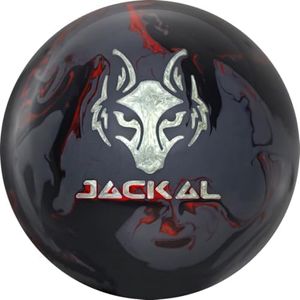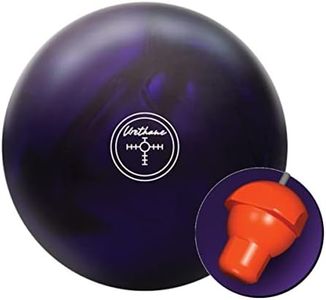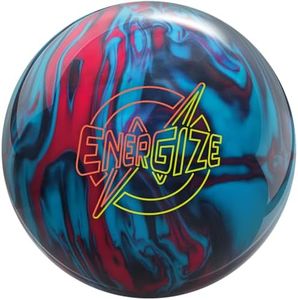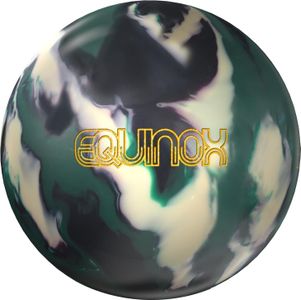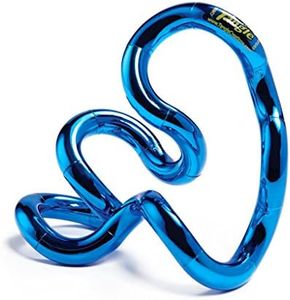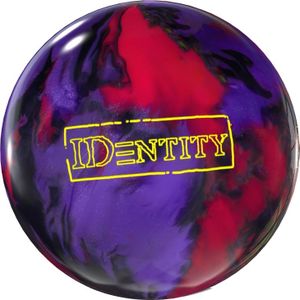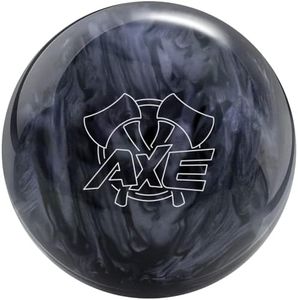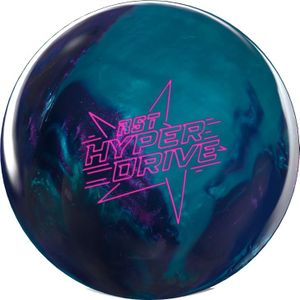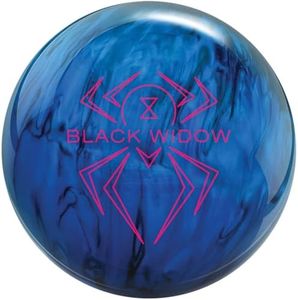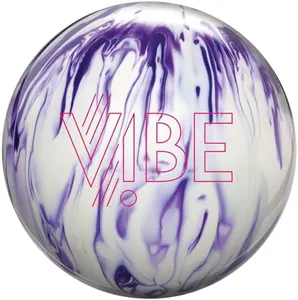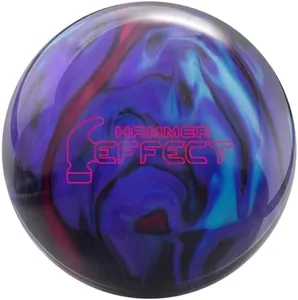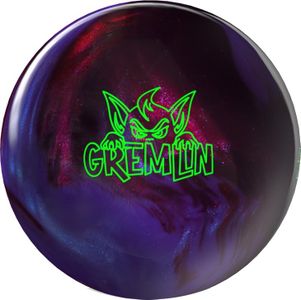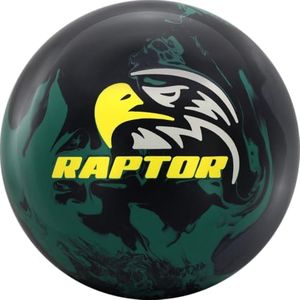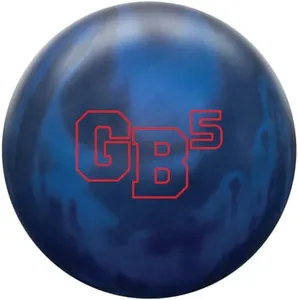10 Best Bowling Balls 2025 in the United States
Our technology thoroughly searches through the online shopping world, reviewing hundreds of sites. We then process and analyze this information, updating in real-time to bring you the latest top-rated products. This way, you always get the best and most current options available.

Our Top Picks
Winner
Hammer Black Widow 3.0 Bowling Ball 14lbs
Most important from
497 reviews
The Hammer Black Widow 3.0 Bowling Ball is a strong contender for bowlers looking for a reliable and high-performing ball. Weighing in at 14 pounds, it strikes a good balance for intermediate to advanced bowlers who prefer a heavier ball for better control and impact. The Gas Mask core, known for its versatility, allows for excellent hook potential, making it a great choice for those who like to throw a powerful curve. The upgraded HK22 coverstock enhances performance, especially on medium to oily lane conditions, giving it a solid reputation.
One of the standout features is its aesthetic appeal; the striking black and orange color scheme not only looks good but also emphasizes the balance of style and performance. The ball's finish, with a variety of grits, helps in achieving the desired hook and control.
This ball may not be the best fit for beginners. The hook potential and weight may be challenging for those who are just starting out. Additionally, while the 2-year warranty is reassuring, heavy use can impact performance over time, and proper maintenance is crucial. The ball’s weight and specifications might also limit some users, particularly lighter bowlers or those with specific throwing styles.
Most important from
497 reviews
MOTIV Jackal Onyx 16 Pounds
Most important from
32 reviews
The MOTIV Jackal Onyx 16 Pounds bowling ball is made for bowlers who want strong hooking power and solid performance on heavy oil lanes. Weighing 16 pounds, it suits adult players who prefer a heavier ball that can create more impact. The leverage HXC solid reactive coverstock is designed to provide maximum hook potential, helping the ball grip oily surfaces well. Its core is crafted to deliver consistent power, allowing you to maintain performance without losing energy through the lane. The ball’s colors—black, gray, and red—offer a sleek look but don’t affect play.
One of the main strengths is its ability to handle tough oil conditions, making it ideal for players facing challenging lane surfaces or those who like aggressive ball motion. The 1-year manufacturer warranty adds some peace of mind. With a focus on heavy oil performance, it may be less effective on dry or medium-oil lanes where a less aggressive hook is preferred. The relatively high price rank suggests it’s a specialized ball rather than a beginner’s choice. The MOTIV Jackal Onyx is a powerful, high-hook ball best suited for intermediate to advanced bowlers looking to tackle heavy oil patterns with confidence.
Most important from
32 reviews
Hammer Purple Pearl Urethane 15lb (BSFB21295052)
The Hammer Purple Pearl Urethane bowling ball is designed for bowlers seeking a reliable option for light to medium oil lane conditions. Weighing 15 pounds, it strikes a good balance for most adult bowlers looking for control and smooth performance. The urethane pearl coverstock offers durability and a good feel, making it suitable for those who prefer a traditional touch in their game. Its LED core contributes to consistent motion on the lanes, enhancing predictability during play, which is particularly beneficial for beginners and intermediate players refining their technique.
One of the notable strengths of this bowling ball is its hook potential, which allows for improved ball movement towards the pins without being overly aggressive. This makes it ideal for bowlers who want to increase their hook while still maintaining control. However, there are some drawbacks to consider. The ball is best suited for light to medium oil conditions, which means it may not perform as well on heavy oil lanes. Bowlers who frequently encounter such conditions might find that they need a different ball to achieve optimal results.
Additionally, as a urethane ball, it may not hook as sharply as some resin options, which may limit its appeal for more advanced bowlers seeking maximum hook potential. The Hammer Purple Pearl Urethane bowling ball is an excellent choice for casual and intermediate bowlers looking for a dependable and versatile option on lighter oil conditions. It combines quality craftsmanship with user-friendly features, though those in need of a more aggressive hook on heavy oil might want to explore other options.
Buying Guide for the Best Bowling Balls
Choosing the right bowling ball can significantly impact your game. The right ball will complement your style, improve your accuracy, and enhance your overall performance. When selecting a bowling ball, consider factors such as weight, coverstock material, core type, and the ball's hook potential. Understanding these key specifications will help you make an informed decision and find the best fit for your needs.FAQ
Most Popular Categories Right Now

